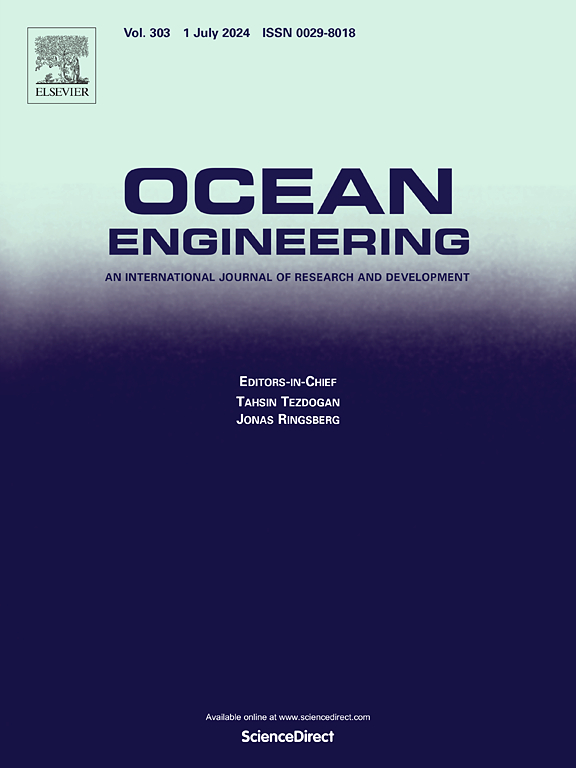Numerical acceleration method for static and dynamic analysis of deepwater laying pipelines
IF 4.6
2区 工程技术
Q1 ENGINEERING, CIVIL
引用次数: 0
Abstract
The deepwater pipelay finite element model often uses relatively small time steps for numerous iterative calculations to ensure sufficient precision, resulting in significant computational time consumption. In this paper, a novel numerical acceleration method is proposed, combining the vector form intrinsic finite element (VFIFE) method with GPU parallel techniques to address this issue. Efficient GPU computational solvers for static and dynamic analyses of deepwater J-lay and S-lay pipelines are developed by utilizing CUDA-based algorithms to handle key mechanical processes, including the calculation of pipeline internal forces and moments, top excitation, pipe-stinger roller interaction, hydrodynamic forces, and pipe-seabed soil interaction, etc. The method is applied to shell element, beam element, and refined beam element models, with coding strategies optimized for GPU parallel execution. Subsequently, localized pipeline solvers and global pipelay solvers are established to showcase the method's potential to significantly reduce computational time while maintaining accuracy. This study emphasizes the advantages of combining the VFIFE method with GPU parallel techniques and contributes efficient computational solvers for the mechanical analysis of deepwater pipeline laying.
深水敷设管道静动力分析的数值加速法
深水管道有限元模型通常采用相对较小的时间步长进行多次迭代计算,以保证足够的精度,从而导致大量的计算时间消耗。本文提出了一种新的数值加速方法,将矢量形式固有有限元(VFIFE)方法与GPU并行技术相结合来解决这一问题。利用基于cuda的算法处理管道内力和弯矩计算、顶部激励计算、管道-推力杆-托辊相互作用计算、水动力计算、管道-海底土相互作用计算等关键力学过程,开发了适用于深水j -铺设和s -铺设管道静动力分析的高效GPU计算求解器。将该方法应用于壳单元、梁单元和精细化梁单元模型,并对编码策略进行了GPU并行执行优化。随后,建立了局部管道求解器和全局管道求解器,以展示该方法在保持准确性的同时显着减少计算时间的潜力。本研究强调了VFIFE方法与GPU并行技术相结合的优势,为深水管道铺设力学分析提供了高效的计算解。
本文章由计算机程序翻译,如有差异,请以英文原文为准。
求助全文
约1分钟内获得全文
求助全文
来源期刊

Ocean Engineering
工程技术-工程:大洋
CiteScore
7.30
自引率
34.00%
发文量
2379
审稿时长
8.1 months
期刊介绍:
Ocean Engineering provides a medium for the publication of original research and development work in the field of ocean engineering. Ocean Engineering seeks papers in the following topics.
 求助内容:
求助内容: 应助结果提醒方式:
应助结果提醒方式:


